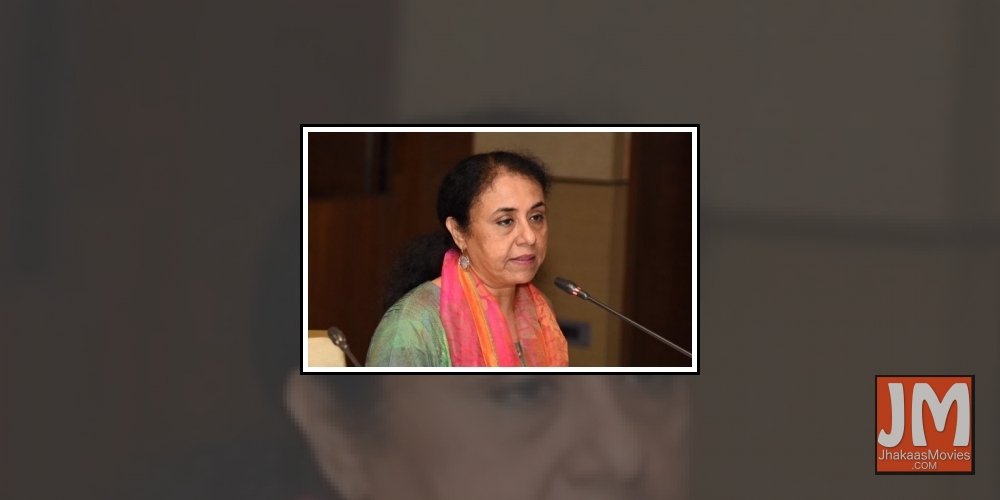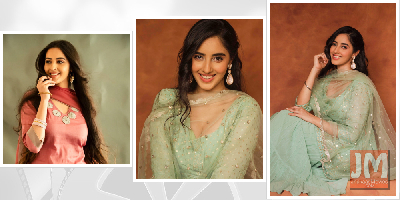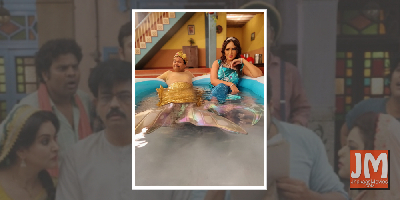 Aan Tiwari honoured with Best Child Actor award for Baal Shiv
Aan Tiwari honoured with Best Child Actor award for Baal Shiv Ghategi rahasymayi ghatnaye!
Ghategi rahasymayi ghatnaye! Amazon Prime Video unveils the 2021 Festive Line-up; brings a heady mix of Indian and International titles on the service
Amazon Prime Video unveils the 2021 Festive Line-up; brings a heady mix of Indian and International titles on the service Release: Music video of, Yeh Haalaath, from Mumbai Diaries 26-11
Release: Music video of, Yeh Haalaath, from Mumbai Diaries 26-11 Bhumi Pednekar feels she shares feel-good value with Akshay Kumar on screen
Bhumi Pednekar feels she shares feel-good value with Akshay Kumar on screen
India's jewellery legacy: Adornment to cultural capital

New Delhi, Sep 22 (IANSlife) Jewellery finds a major piece of pie when it comes to Indians' cultural capital. Our adornment traditions go long back and add not only magnificence to a grand costume, but are a financial investment too.
Cultural capital consultant and jewellery historian Dr Usha R. Balakrishnan talks to IANSlife about the Indian legacy of jewellery. The principal curator at World Diamond Museum, Dr Balakrishnan has penned "Treasures of the Deccan: Jewels of the Nizams", among other books and holds a Ph.D in ancient Indian culture and a post-doctorate in museum studies.
She has curated Saffronart's jewellery conference "Mapping a Legacy of Indian Jewels" from October 11-12 in Mumbai. It will explore the history and tradition of jewellery in the context of art, literature, culture and fashion in India and globally. The event aims to create awareness about, and initiate a discussion around the history and practice of designing, creating and documenting jewellery from the subcontinent.
1. India is known for its jewellery-making and wearing traditions...
India has an unbroken tradition of adornment that goes back more than 5000 years. In fact, wearing a piece of jewellery is written in every Indian's DNA. Sacred and royal -- jewels are worn in every region of India, by men and women of all communities, rich or poor, urban and rural, across every strata of society.
2. From something with heirloom and ornamental value, how has jewellery emerged as a great option to invest in?
Jewellery has always been an instrument of savings in India. Jewels and gems served as portable banks that could be easily liquidated when the need arose. This sentiment endures even today. India is one of the largest consumers of gold in the world and much of this gold is hoarded in the form of jewellery. Therefore, we can call jewellery an "economic capital".
Jewellery is also cultural capital -- ancient Indian bead manufacture, the discovery of diamond-tipped tools to cut diamonds and engraved gemstones, the vast variety of designs seen in the jewels depicted in sculptures and paintings, the fabulous jewels of the royals, the amazing range of forms worn by the pastoral communities, and above all, the vibrant gem-trade out of India, past and present, are all evidence of it.
3. As a jewellery historian, what future trends do you see in the whole ecosystem jewellery -- as art, as a piece of legacy and as capital?
The passion for jewels remains undiminished in India. Today, handcrafted items by traditional karigars co-exist with mass-produced factory manufactured jewels. Unconventional materials rival gold and diamonds for shelf space; and artist-craftsmen and fine jewellery designers inspired by the rich heritage of India offer a range of choices to appeal to every segment of the consumer. India has the greatest tradition of hand-craftsmanship in the world. It is the largest manufacturer of diamonds and the passion for jewellery remains unabated.
As a jewellery historian, working in a nascent field is exciting, challenging and above all a great responsibility for me to document the manifold facets of India's jewellery legacy.
(Siddhi Jain can be contacted at siddhi.j@ians.in)








